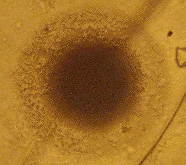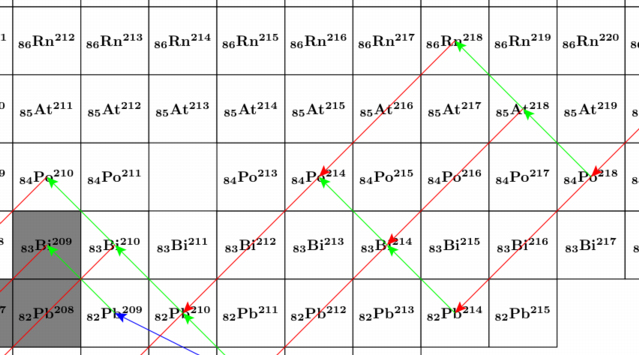Crank Astronomy
(Formerly "Dealing with Creationism in Astronomy")
Creationist Cosmology Issues
- A Changing Speed of Light? (Last Modified: November 24, 2009)
- New Redshift Interpretation (Last Modified: November 24, 2009)
- Polonium Halos (Last Modified: November 24, 2009)
- Accelerated Radioactive Decay? (Last Modified: November 24, 2009)
- Solar Claims (Last Modified: November 24, 2009)
- A Shortage of Supernova Remnants? (Last Modified: November 24, 2009)
- A Decaying Magnetic Field of the Earth (Last Modified: November 24, 2009)
- Redshift Quantization (Last Modified: March 18, 2012)
- "Relativistic" Creationist Cosmology (Last Modified: March 18, 2012)
- Anomaly Science (Last Modified: November 24, 2009)
- Development Notes (Last Modified: November 24, 2009)
Site Resources
- History & Technology (Last Modified: March 18, 2012)
- Philosophy & Religion (Last Modified: November 24, 2009)
- Classroom Resources (Last Modified: November 24, 2009)
- Presentation Slides (Last Modified: November 24, 2009)
Credits
Site Contents
© 2001-2012, W.T. Bridgman
Send comments, questions, and other inquiries to
This site is also listed at comPADRE and AstronomyCenter.org.
CSS developed with the assistance of CSScreator
Polonium Halos as Evidence of a Young Earth?
- Robert V. Gentry's Web Site "Earth Science Associates"
- Here Gentry promotes his polonium halo claims and his book Creation's Tiny Mystery.
| What Gentry Doesn't Tell You...
Robert Gentry only briefly mentions radon migration as a possible source of radiohalos but dismisses it as he found no precursor radon halo with the polonium inclusions. We think this dismissal is premature. |
 Uranium halo image 1000x. Uranium halo image 1000x.Courtesy John Brawley |
Facts:
- Radon is known to migrate through the rock. This is the same radon that may be a human health hazard in some areas of the United States, accumulating in low-lying, enclosed spaces, such as basements. See Wikipedia: Radon
- If radon is leaking from the uranium inclusions, you would expect to find uranium halos with some daughter nuclei producing fainter halos than one would expect compared to the uranium halo. This could be interpreted as a overabundance of uranium compared to the daughter nuclei, an observation that has been reported by Gentry[Creation's Tiny Mystery, pg 248].
- While radon is described as an inert gas, this term applies only under the conditions designated as Standard Temperature and Pressure (STP, i.e. 1 atmosphere and 0 degrees C). Under other conditions, it can form compounds such as radon fluoride. Compounds are possible for other noble gases as well. The description of 'inert' also only applies to the formation of stable molecules at STP. Because atoms are composed of charged particles in a dynamic state, there are always residual electromagnetic forces which can interact with other nearby atoms. Inert gas atoms are not 'billiard balls'.
- Not all the migrating radon will escape into the atmosphere. Some will remain trapped in the rocks. This is a simple consequence of the nature of diffusion.
- Radon is not the only gas migrating underground. Far larger amounts of helium are produced as the alpha particles from radioactive decay combine with unbound electrons (liberated from the atoms by the alpha decay and charge conservation).
- Bubbles of helium and radon can be trapped in the rocks. Once trapped, the radon will continue to decay through the series, but the helium will eventually diffuse out of the rock.
- It is important to note that many home radon removal systems use an aeration process to collect the radon in the air and remove it, a process which is very efficient, >90% (some recent papers on these mechanisms: Radon removal from water supplies by diffused bubble aeration system, Radon Removal: Its Effect on Short-Lived Radon Progeny and Implications for Effective Dose). Aeration uses the principle that gas exchanges can occur at the interfaces between gases and liquids (See Henry's Law). Based on some of Gentry's papers on halos in coalified wood, I suspect underground water may also provide part of the mechanism for collecting the radon for halo production.
- If the minerology supports halo production, halos will be formed by these alpha decays.
- There are additional branches in the uranium and thorium
decay series besides those which Gentry mentions in his book or papers.
Some of these branches include additional decays relevant radon to polonium
production. Here's a section of the U-238 decay series generated from more modern decay data. (Note that the Po-212 isomer currently does not appear in this chart.)

Gentry does not include the branch to the decay channel with Rn-218 in his writing. While not directly in this series, it is also known experimentally that Rn-214 will alpha-decay to Po-210. There are also a number of isomers in this region which may impact the distribution of decay products. I'm still exploring ways to illustrate this. I've found most of these other decays in isotope tables going back to the 1970s. Gentry seems to have ignored them for thirty years.
The short answer: The standard ancient Universe model expects some type of halo to be formed from migrating radon from these decay series. We identify Gentry's polonium halos with this process.
By my count, this leaves three remaining "mysteries" in this process, and rather minor mysteries at that:
- Why don't see a halo from the migratory isotope of radon?
- Since Gentry reports radon halos in uranium inclusions, he dismisses radon migration since the polonium halos show no radon halo[Creation's Tiny Mystery, pg 125, 224, 242]. However, there are other known processes which could explain this:
- If the radon is still in the form of bubbles larger than the final inclusions, the physical distances between nuclei at the time of decay could disperse the crystal dislocations sufficiently to render a halo undetectable.
- Since radon is a gas, the faster atomic motion could yield larger thermal broadening of the energy of the emitted alpha-particle. Can this spread the region of halo formation large enough to make the halo undetectable? My initial calculation suggest this would be a minor contribution.
- The alpha-particle from the decay, colliding with ambient helium atoms, can lose a large fraction of its energy in such a collision. This would definitely alter the appearance of a radon halo, if not completely eliminate its formation. This opens the possibility that if the ambient helium stays around too long, it could suppress halo formation from other isotopes in the decay chain. This could explain some rare reports of Bi-211, Bi-212, and other halos.
- What produces the (apparent?) separation of the radon by isotopes?
- Part of the solution to this question may depend on the detailed geological environment and numbers of specific halos. I've been unable to extract this information in sufficient detail from Gentry's writing (I'm a physicist, not a geologist). However, in brainstorming this, I've found two physical processes, measured in laboratories for other elements, which can alter isotope distributions. I've yet to find any publications applying these processes to the conditions of underground radon, nor do I find any mention in Gentry's articles that he has considered them. I'm presently reluctant to mention more since my literature search is still in progress and there may be some potentially patentable ideas in the naturalistic solution to this question.
- No link of Rn-214 into U-238 or other relevant decay chains?
- Rn-214 is known to alpha-decay to Po-210. At present, the decay tables don't reveal a link between Rn-214 and the rest of the U-238 decay chain. Considering the preponderance of beta-decay branches in many of the decays in this region of isotopes, that is probably an experimental oversight. An actual search may find connecting branches. I have still not ruled out a connection to this chain through some of the more unconventional decay channels.
These are far smaller mysteries than Gentry would want us to believe. After all, we don't see tracks left by water vapor through the atmosphere between the time it evaporates from the ocean to when it condenses into clouds. Is this evidence of the non-existence of the water cycle?
Which of the above facts does Gentry dispute? If Gentry denies that radon is responsible for the halos, there are a number of issues Gentry still needs to address.
- Gentry's model needs to explain why we don't see results of the radon decay, a process which should still be occuring today. What is happening to the radon?
- Why do we only find halos downstream in the decay chain from a radon precursor? Why don't we see radium-226 halos in isolation, which does not have a gaseous precursor. Halos with radium's 1600 year half-life would still be a problem for an old Earth.
- Gentry could claim that radon can't collect together to form bubbles with helium and/or air, perhaps because it is 'inert'? If that is the case, then is he denying the function of many radon removal systems?
- This raises a theological question: would the presence of such a radon-removal system in the home of a young-universe creationist be evidence of hypocrisy? Should fundamentalist congregations who hold to a Young Universe interpretation insist that such devices be banned from homes of their members since radon collection and removal by aeration defies Gentry's alleged Divine mechanisms for polonium halo formation?
An interesting note: In tracking back some of the history of radon, it seems that the health hazards of underground radon was really only recognized in the 1990s, perhaps as far back as the late 1980s (anyone have a more definitive reference?). Yet Gentry had evidence of radon migration back in the 1970s in the form of these halos and missed the opportunity of making a truly significant contribution.
Stay tuned...
A halo simulation code is under development. I have already identified some additional decay channels that Gentry and others do not include in their standard charts and analysis. Some of these additional channels have definite implications for halo formation.
Here are some EPS graphics of the decay chains using data from Nuclear Wallet Cards. (Currently, isomers do not display in the chart):
U-238 (228KB, EPS), U-235 (228KB, EPS), Th-232 (224KB, EPS).
Additional sources and references.
- "Polonium" Halos and the Age of the Earth
- John Brawley's web site page on pleochoric halos.
- The Talk.Origins Polonium Halo FAQ
- Polonium Halos and Myrmekite in Pegmatite and Granite
-
Work on polonium halos by Lorence G. Collins.
- The Geology of Gentry's "Tiny Mystery"
-
Work on polonium halos by J. Richard Wakefield.
- More on the Polonium 218 Controversy
- A Skeptic Friends Network article on polonium halos
Last Modified: Tue Nov 24 23:41:16 2009